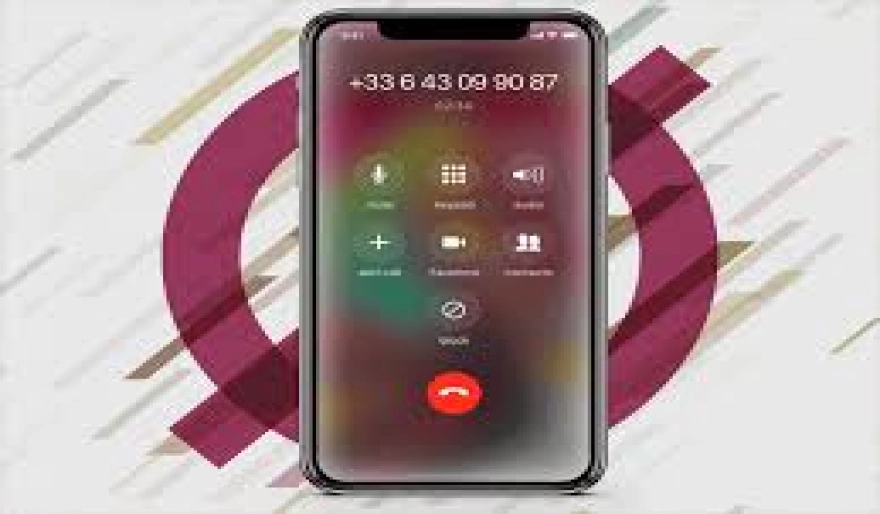Block Spam Calls and Messages on Android Devices
11 min read Block Spam Calls and Messages on Android Devices - written by YASSIN Zoi, Senior Content Marketer April 15, 2024 10:03
1. Introduction to Spam Calls and Messages
Due to the increased usage of mobile devices for
personal communications, the goal was to identify the most effective methods
for blocking such nuisances (spam recognition). As many commercial academic
databases and some Android apps were available, these were evaluated. Any
easily identified means of minimizing call and message spam were also
summarized. The growing availability of cellular data and performance
benchmarks may also help to provide additional dimensions for analysis.
Furthermore, the availability of devices equipped with learning hardware (e.g.,
Google AI vision kit), libraries, and the contextual features of connected
devices offers data to be shared among applications influencing the analysis
options and methods available for deployment. The nature of spam calls and
messages and the available features for blocking, learning and integration of
potential blocking solutions will be described.
There has been a significant increase in the number of
spam calls and messages being received by mobile phone users. The goal of the
spammers typically is to socially engineer the recipient into providing
personal information or to click on a link within a message that leads to
malware. The phone call spams typically exploit security loopholes and,
depending on the region, the incentive for the spammers can be quite high due
to how easy it is to profit from scams. This has resulted in the development
and introduction of numerous apps for Android devices, which have features able
to block and identify these nuisance calls and messages. However, as with all
apps, their effectiveness at generating accurate and up-to-date databases that
identify and block these nuisances do vary. The availability of open
application programming interfaces (APIs) and software development kits (SDKs)
from carriers and other commercial sources also provide opportunities for
developer initiated integrations.
2. Built-in Features for Blocking Spam on Android
2. SMS Blocking Another great way that you can block
spam is by using SMS blocking. This feature enables you to block spammers
sending threatening or unwanted messages to your Android phone. To use it,
start by opening the built-in messaging app and select the number from which
the reported messages came. Choose "Block Number" to complete the
process. Just like with call blocking, the process may vary depending on the
model and manufacturer of your device.
1. Call Blocking Call blocking is a feature that
allows you to block phone numbers. You can use it to block spammers who
regularly call you, for instance, those using automated calling to offer shady
deals. To activate this feature, navigate to the dialer app, go to the contact
that you would like to block, and proceed by selecting the "block" or
"report call as spam" feature. In most cases, the process may vary
depending on the model and manufacturer of your device. To test whether the
number can no longer reach you, ask it to give you a call.
Thanks to advancements in technology, many
manufacturers of Android devices offer several built-in features that enable
you to block spam calls and messages on your devices. Among these features,
some may include third-party services, networks, or apps, such as T-Mobile's
expansion of the spam ID and spam blocking. Here are some of these features:
3. Third-Party Apps for Blocking Spam Calls and Messages
There is a vast number of these apps on the Google
Play Store. Some of these have been rated and reviewed by several thousand
users and work as expected, but it is important to analyze and understand how
the app works and what the pros and cons of using a specific app are. A popular
app in this category is Truecaller. It identifies and blocks calls from
robocalls, telemarketers, and other unwanted or unknown calls in real-time. It
can also block spam messages, manage your block list, and show the caller ID,
even if the number is not stored in your contacts. The app's database not only
includes a user report tool but also allows verified businesses to include a
visual, color-coded ID when they contact you. The app also features a built-in
dialer. Google Messages is also a viable alternative. It's the default SMS app
for new Android devices and is gradually receiving improvements. At the end of
2019, the app brought the ability to automatically detect spam messages and
hide them to prevent them from soliciting and scamming users.
Third-party apps for blocking unwanted calls and
messages work in a similar way to native solutions, but usually work better and
have additional features. Most Android blocking apps are free but offer premium
services, such as blocking calls and messages from numbers that are not in your
contact list, blocking hidden calls, and blocking calls and messages from
private or unknown numbers. They also come with reporting and feedback systems
where users can report numbers as spam, allowing anyone else that uses the app
to be warned about it and, in some cases, excluding the numbers automatically.
4. Best Practices for Preventing and Managing Spam on Android
Devices
Spam calls and messages can disrupt the user's
experience by causing discomfort. There are several anti-spam tools with
various procedures for reducing the number of spammers on a daily basis.
However, it is worth applying caution to the most significant factors that are
closely related to the user's privacy and resources to implement anti-spam
solutions to reduce frustrating experiences. The best preventive strategies to
manage spam included tips for applying system or applications settings, the
performance limitations of the anti-spam solution, the processing time to
report the spam and block a spoofer, and information on the information
disclosed while reporting unwanted calls and messages.
As a best practice, users need to keep the device
software updated and educate themselves on the device's capabilities for
filtering unwanted calls and messages. Additionally, users need to carefully
evaluate the permissions requested by applications, especially when anti-spam
solutions require access to contacts, and the right settings need to be applied
for effective action on unwanted calls and messages.
The increasing number of end-users who report
receiving a high volume of unwanted spam phone calls and messages indicates
that applying best practices for the management of both unwanted phone calls
and spam messages remains a challenge for users of mobile devices. This section
covers the best practices based on the analysis of experiences with commercial
applications and from preventive strategies.
Section Title: 4. Best Practices for Preventing and
Managing Spam on Android Devices
5. Conclusion and Future Trends in Spam Prevention
Spammers are continuously developing sophisticated
techniques to try to avoid the systems applied in the detection of spam calls
and messages. Truecaller and SMS organizer or Google and Pulse, the first, a
reference in the search for companies and identification services, and the
second, an application to organize text messages and contacts, they all use a
system that uses an experience base in order to anticipate what is real user
opinion on an incoming call, as the base is constantly being updated in the
cloud in real time, becoming a very effective tool in the fight against this
type of threat.
Legitimate telecommunications services have been the
victim of the success of their services, with their growth being the triggering
factor for illicit and illegal use. Spam received has a cost for both the user
who receives it and the telecommunications service provider. Furthermore, not
only do spam calls and messages generate economic losses, but they can also
represent potential security risks to the recipient, such as identity theft or
the theft of sensitive information or company secrets, as well as negatively
impacting the performance and degradation of network services. Therefore, in
addition to offering advanced communication services, telecommunications
operators are also interested in applying technology in the combat against
these phenomena.
User Comments (0)
Popular Apps










Editor's Choice









